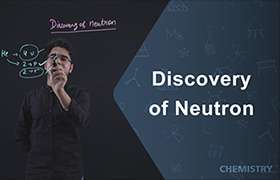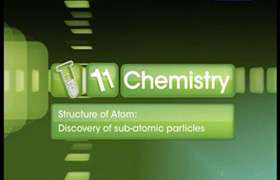CBSE Class 11-science Answered
The e/m ratio of cathode does not depend on the nature of the gas filled in the discharge tube.Give reasons.
Asked by mehrarora26 | 22 Jul, 2015, 09:43: AM
Cathode rays are beam of electrons which are negatively charged. These electrons are identical. Hence, the charge to mass ratio (e/m) of cathode rays is same for all the gases.
Whereas, in case of anode rays, they are positively charged. Also, they are composed of ionised nuclei which vary from gas to gas in terms of atomic number and mass number. Thus, charge to mass ratio (e/m) of the positively charged ions changes as the number of nucleons changes in the nucleus of each gas can be different.
Answered by Hanisha Vyas | 22 Jul, 2015, 11:45: AM
Application Videos
Concept Videos
CBSE 11-science - Chemistry
Asked by ammu32811 | 20 Feb, 2024, 08:58: AM
CBSE 11-science - Chemistry
Asked by kv3582976 | 11 Oct, 2023, 06:57: AM
CBSE 11-science - Chemistry
Asked by dhondesainath | 28 Sep, 2021, 07:45: AM
CBSE 11-science - Chemistry
Asked by jaidawra48 | 13 Aug, 2021, 06:30: PM
CBSE 11-science - Chemistry
Asked by aayushiyadav408 | 12 Jul, 2021, 03:26: PM
CBSE 11-science - Chemistry
Asked by anandkumar10.12.96 | 28 Dec, 2020, 02:34: PM
CBSE 11-science - Chemistry
Asked by fizajain21 | 18 Dec, 2020, 12:46: PM
CBSE 11-science - Chemistry
Asked by darshanabhamare72 | 16 Oct, 2020, 06:31: PM
CBSE 11-science - Chemistry
Asked by brahampreetkaur818 | 15 Oct, 2020, 10:13: PM
CBSE 11-science - Chemistry
Asked by anish.4006 | 18 Sep, 2020, 08:00: PM





